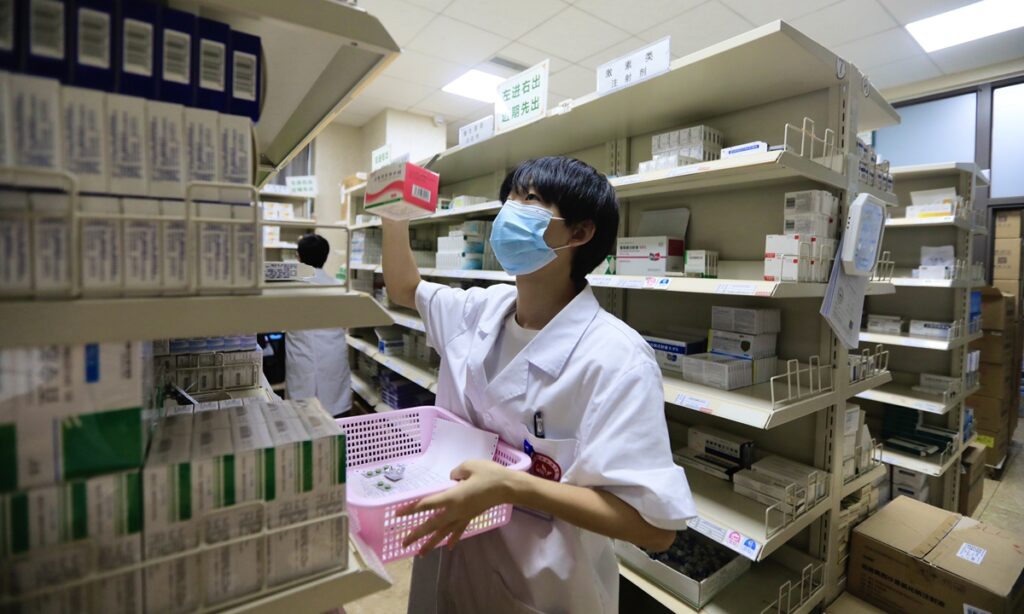Govt, medical institutes fully prepared for early handling of vulnerable people
As China shifts its focus of COVID-19 management to vulnerable groups and severe cases, Chinese health authorities have held successive press conferences in recent days with guidelines in order to ensure the COVID prevention and protection of high-risk groups, especially in rural areas amid a possible infection surge. Medical staff and experts reached by the Global Times have expressed confidence in a smooth transition in different areas, as governments and medical institutes at all levels have made full preparations for a possible infection surge resulting from the population flow during the upcoming Spring Festival holidays.
China has entered a new phase in its COVID-19 response, and the whole country is working to conduct early identification and management on key groups on the elderly, children, pregnant and puerperant women, and patients with underlying diseases, which aims to spot infections among these groups at an early stage and offer timely treatment, Mi Feng, spokesperson for the National Health Commission (NHC), told a press conference on Monday.
Mi also noted the importance of identifying patients with high risk of severe case, ensuring medical resources meet the needs of high-risk patients and boosting medical resources to treat these patients.
This is the third consecutive day that China’s health authorities have stressed the COVID management for key groups, as data from the NHC showed the number of patients in 16,400 fever clinics in second-tier and above medical institutes and 43,100 fever clinics at grass-root medical institutes have decreased, showing a trend of fever clinics across the nation overcoming the infection peak stage.
On Saturday, the NHC also held a press conference to explain in detail how medical institutes at community level should implement the early identification, treatment and transfer of high-risk patients.
Speaking to a wide range of medical staff from both rural areas and large cities, the Global Times reporters learned that medical institutes at all levels, including those in rural areas, have made preparations for a possible infection surge and are doing more to take care of key groups, as more people are expected to return to their hometown to reunite with their families during the upcoming Spring Festival holidays.
Fully prepared
Local community hospitals have played a vital role in triage and reducing the pressure on large hospitals, including receiving transferred COVID-19 patients from superior hospitals and conducting fever clinic outpatient services, said Huang Yun, deputy director of the Taopu Community Health Service Center of Putuo district in Shanghai.
The community hospital has used different colors to classify patients, marking high-risk groups as “red”. Their health status is marked with specific information such as whether they have been infected or not, in order to ensure those in need get medicine and treatment in time, Huang told the Global Times.
“Currently, the number of these kinds of patients has indicated a declining trend in our community hospital, as the infection peak has passed,” Huang said, noting that the fever clinic in the Taopu center received more than 200 COVID-19 patients daily during the peak period, and now receives around 20 to 30 patients a day. The hospital is fully prepared to provide normal medical services for community residents during the upcoming Spring Festival, Huang added.
Aside from fully mobilizing hospitals at the community level, China has put more focus on key groups and areas. For example, on Sunday, the working group on disease prevention of rural areas under the State Council joint prevention and control mechanism announced that 80 percent of the first batch of oxygenators that were assigned to more than 11,000 hospitals in towns and villages in 832 poverty-elimination counties have been deployed.
The Global Times also learnt from Yixian county, North China’s Hebei Province, that the county hospitals, township hospitals as well as village medical institutions have all pulled through the hardest period in dealing with the surging number of COVID-19 patients last December and is now seeing much fewer visitors coming for COVID treatment.
The tiered medical care system played a vital role in categorizing patients and giving treatment according to the need to minimize the strain on the system, thus helping the county of more than 500,000 residents overcome the “epidemic tsunami” smoothly.
Ahead of China’s major change in its COVID response strategy in early December, Yixian county has made preparations to store medicines and upgrade medical equipment, allocating 5 million yuan ($740,000) to its public medical institutions to upgrade fever clinics and equipment. It has also allocated 3 million yuan to enhance its stocks of medicines, including fever pills and anti-virus medicines, the Global Times learnt.
The key population groups in the country – for example, elderly citizens above 65 years old or people with chronic diseases – have been recorded in online graphics which are shared within the medical system, through which key information on these groups can be updated in real-time.
The director of the Nanchengsi township hospital in Yixian county, said that as soon as the township passed its COVID peak in mid-December, the township hospital launched a health check package, charging just over 100 yuan ($14.86), that provides a complete examination of COVID-recovered people. For example, examinations for myocardial enzyme, liver function, kidney function, electrolytes, electrocardiogram, and urine routine are included in the package.
Facts and data have shown that whether it is before or after China’s downgrading of its COVID-19 management policy from Class A to Class B, the country has made full preparations for the optimization and adjustment, which is based on science, and is not a U-turn or a lack of preparation, as some Western media have claimed, top public health experts and senior officials have reiterated since December.
For example, after China announced the optimized 10-point COVID-19 response on December 7, health authorities released all-round guidelines advising people who test positive for COVID-19 on how to deal with the infection at home, instructing community hospitals how to offer them proper medical treatment, identifying and transferring patients with severe illness. The authorities also released instructions on prevention work in rural areas and on the treatment of severe cases.
Analysts said that these preparations, such as setting up more fever clinics and hospitals specializing in COVID-19 to deal with climbing infections, making more equipment for treating severe cases, promptly releasing instructions on home quarantine, improving rural areas’ protection of the elderly and stressing early management of high-risk groups, have helped many places in China get through the infection peak and will continue to work.
(Global Times)




